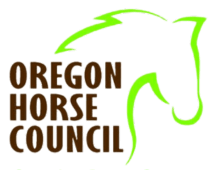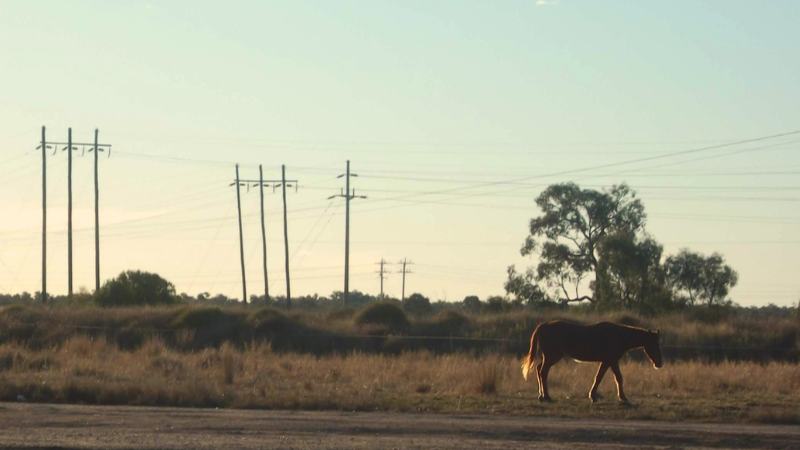Establishing multi-use trails, specifically equestrian trails, in any region of the United States can be daunting. From shaping partnerships between adjoining landowners of private land, to finding funding for trail building, the process is understandably difficult. Many communities have figured out that partnering with utility companies for the use of existing easements as trails has lifted the burden of piecing together private lands from scratch.
Utility companies are becoming more and more involved in the establishment of recreational trails across the country. “A spatial analysis by the Rails to Trails Conservancy of its trail database and publicly available electric transmission-lines data revealed that more than 400 multi-use trails across the country coexist within electric utility corridor rights-of-way, and approximately 17% of rail-trails in the United States are at least partially shared with this type of utility corridor.”1 These types of trails are not complication-free, but with carefully negotiated land use and maintenance agreements, it is a viable way to establish multi-use trails in areas otherwise void of viable trail land. According to the Conservancy, “many types of utilities, including water, sewer, natural gas, electric and fiber optic, can have their lines buried or encased near or beneath a trail, while telecommunications, cable and electric utilities can run above a corridor using air rights.” This translates into acres of usually linear land space available for the establishment of recreational trails.
Examples of utility and trail partnerships around the US:
- Electric transmission lines: The Duke Energy Trail is a 4-mile trail in Pinellas County, Florida, with electric transmission lines running along the trail.
- Gas lines: The Columbia Trail is named after the natural gas pipeline that runs beneath it for 15 miles in rural northern New Jersey. After installing the pipeline, the company donated a trail easement to Hunterdon and Morris counties to develop and maintain the trail.
- Sewer lines: The Battle Creek Regional Park Trail in Ramsey County, Minnesota, is co-located with county-managed sewer lines.
- Water pipelines: The Pipeline Trail in Tacoma, Washington, is an aptly named trail that follows the right-of-way of a water pipeline. The 4.3-mile corridor is owned by Tacoma Water, a municipal water system.
- Broadband/fiberoptic:
- Among other utilities, the York County Heritage Rail Trail has newly installed broadband cables running underneath its right-of-way.
- Running 26 miles through Mackinac County, Michigan, the St. Ignace to Trout Lake Trail is co-located with fiberoptic cable.
- Irrigation canals/districts: The BBWA Canal Trail in Yellowstone, Montana, follows the Billings Bench Water Association Canal, which is used for irrigation and storm drainage.
Sharing a trail corridor with a utility is not only an efficient use of space, it also has the potential to defray the costs associated with trail development. With properly negotiated maintenance and land use agreements, utilities can have a minimal effect on—and even offer a host of benefits for—the trail and its community.
It is not uncommon for utility companies to negotiate easements with railroads while the rail-line is still active. Rail-trails are uninterrupted corridors ideal for linear energy and telecommunications infrastructure. When rail service ceases, the utility remains, but the original easement may be transferred to the organization that acquires the corridor for trail use through railbanking. Sometimes trail development is reserved as a permitted use on an existing easement.
Definition of railbanking: Condition allowing a railroad to “bank” a corridor for future rail use if necessary.
Public jurisdictions can take an active role in encouraging utilities to cooperate in trail projects along their rights-of-way. Additionally, local recreation and equestrian advocates can influence companies to allow trail use within the utility right-of -way. In some states, like Texas, legislation was passed that lowered legal barriers for trail development on utility corridors. There may also be pre-existing processes and safety codes or restrictions on structures that may be part of the utility easements and which must be adhered to by the recreational trail builders.
Sometimes there is monetary compensation in the form of annual fees which benefit the partnership between a trail-owning agency and a utility company. On the W&OD Trail in Virginia, AT&T pays $250,000 a year ($7,000 per trail mile) for their telecommunications easement. In this case, the Northern Virginia Regional Park Authority owns the corridor but allows the utility full access on condition of compensation. This yearly payment is used for reimbursement and repairs and can fund future trail development and general upkeep.
Because utility companies regularly seek out long, linear corridors as sites for their services, they usually do not need much convincing to see the benefits of trail and utility co-use. However, there are other potential benefits for the utility company. Development of a trail has the potential to make a utility space more functional and visually attractive, thereby making nearby residents less likely to oppose current or future utility plans. Supporting and being close to public space like a trail also establishes the company and its workers as a part of the community.
Despite all these benefits, proposed utility co-use can be met with opposition from neighbors and trail users for many reasons. Most commonly, there are complaints of compromised visual integrity of the trail. Such lines can be buried either directly under or adjacent to the trail, making all but maintenance invisible. If the utility company is not willing to negotiate to protect views from the trail, federally funded projects may be able to gain viewshed protection under statutes like Section 106 of the National Historic Preservation Act or Section 102 of the National Environmental Policy Act.
Land use by the utility company can also become a substantial issue if the utility company owns, rather than eases, the corridor. This could result in trail damage due to regular utility maintenance and unpredictable trail closure. Some companies may use pesticides that are harmful to the environment. Such problems can be alleviated by open communication and requests for specific permits or licensing in the easement or land agreement. As previously mentioned, financial compensation is also an option.
The electric and magnetic fields (EMFs) surrounding overhead power lines can also raise concerns in the community. EMFs are the invisible areas of energy associated with the use of electric power. But being exposed to power lines while using a trail should not be cause for concern.
Utility companies may require additional precautions to preserve public safety when faced with the request for construction of a trail on their land. Signage and blocking of dangerous electrical equipment from trail users, anti-climbing poles and buffer space between the trail and transmission towers might be mandated.
Before undertaking discussions with local or national utility companies, visit their websites in order to determine the process, protocol and actual potential for a trail partnership.
Article By Laurel A. Florio for ELCR, Fall 2023

The Equine Land Conservation Resource leads in the protection and conservation of lands for the horse and horse-related activities.

